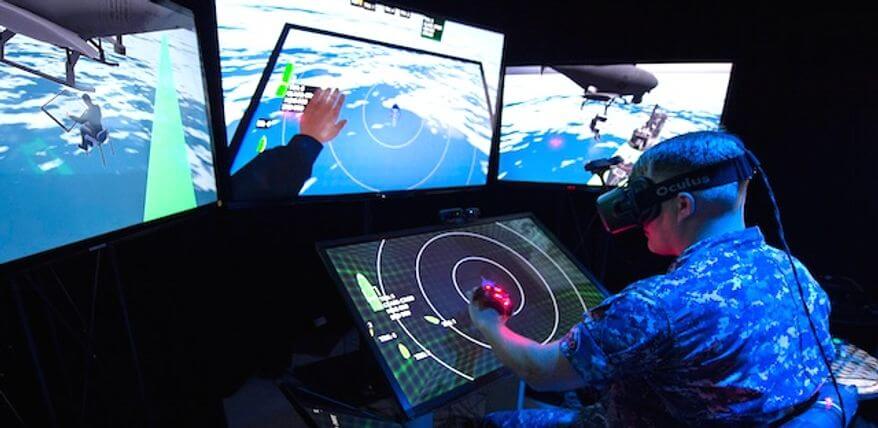Naval Technology: How the U.S. Navy Innovates for Peace and Strength

Introduction:
Naval technology is the application of science and engineering to design, build, operate, and maintain naval vessels and systems. Naval technology encompasses a wide range of fields and disciplines, such as shipbuilding, propulsion, armament, navigation, communication, electronics, sensors, robotics, cyberwarfare, and more. Naval technology is constantly evolving to meet the changing needs and challenges of the U.S. Navy and its mission.
Summary:
The U.S. Navy has a proud history of innovation and adaptation in naval technology. From the Revolutionary War to the present day, the Navy has used technological advances to overcome its enemies and protect its interests. Naval technology has shaped the naval warfare of the past, present, and future, and has enabled the Navy to project American power and influence around the world. The Americans for a Stronger Navy organization celebrates these achievements and supports the continued modernization and expansion of the U.S. naval fleet.
The History of Naval Technology
The history of naval technology is a history of human ingenuity and creativity in the face of changing threats and challenges. From the ancient times to the modern era, naval technology has evolved through various stages and revolutions, such as:
- The Age of Sail: This was the period from the sixteenth to the nineteenth centuries when sailing ships dominated naval warfare. Naval technology focused on improving ship design, rigging, navigation, gunnery, and tactics. Some of the key innovations of this era include coppering, carronades, frigates, submarines, mines, and steam engines.
- The Age of Iron: This was the period from the mid-nineteenth to the early twentieth centuries when ironclad ships replaced wooden ships as the main warships. Naval technology focused on developing armor, steam turbines, propellers, torpedoes, battleships, cruisers, destroyers, submarines, aircraft carriers, radar, sonar, and nuclear power.
- The Age of Information: This is the current period from the late twentieth century to the present day when information technology has become a vital component of naval warfare. Naval technology focuses on enhancing network-centric warfare, stealth, precision weapons, unmanned systems, cyberwarfare, lasers, railguns, hypersonic missiles, artificial intelligence, and biotechnology.
The Importance of Naval Technology
Naval technology is important for several reasons:
- It enables the U.S. Navy to fulfill its mission of maintaining maritime security and superiority in support of national interests.
- It provides the U.S. Navy with a competitive edge over its potential adversaries and rivals in terms of capabilities and performance.
- It allows the U.S. Navy to adapt to new threats and challenges in a rapidly changing global security environment.
- It contributes to the economic prosperity and technological innovation of the nation by creating jobs, industries, markets, and research opportunities.
The Future of Naval Technology
The future of naval technology is uncertain but exciting. The U.S. Navy faces many opportunities and challenges in developing and deploying new technologies that can enhance its effectiveness and efficiency. Some of the emerging trends and technologies that may shape the future of naval warfare include:
- Distributed operations: This involves using a network of smaller and more agile platforms that can operate independently or collaboratively across multiple domains (air, sea, land, space, cyberspace).
- Autonomous systems: This involves using unmanned vehicles that can perform various tasks without human intervention or supervision.
- Multi-domain integration: This involves integrating capabilities across different domains (air,
sea,
land,
space,
cyberspace) to create synergies
and effects that are greater than
the sum
of their parts.
- Human-machine teaming: This involves enhancing human performance
and decision-making
by leveraging
machine intelligence
and automation.
- Resilience: This involves designing
and operating
systems that can withstand
and recover
from disruptions
and attacks.
Our Initiatives on Naval Technology
The Americans for a Stronger Navy organization is committed to promoting and supporting naval technology as a key element of a strong and capable U.S. Navy. Some of our initiatives on naval technology include:
- Fleet Forward initiative: This initiative focuses on the development of new and improved shipyards and maintenance programs, as well as the expansion of the Navy’s fleet with the latest and most technologically advanced ships. This initiative also prioritizes the development of trained personnel and shipyards to meet the needs of Navy programs.
- Naval History Matters initiative: This initiative educates the public on the positive role of the U.S. Navy and the brave individuals who have served in the past, exploring a different moment in the rich history of the U.S. Navy each week.
- Naval Technology Blog: This is a blog category where we post articles, interviews, stories, and opinions on various topics related to naval technology, such as the latest developments, innovations, challenges, and opportunities. You can access the blog category by clicking here.
Conclusion:
Naval technology is a vital aspect of the U.S. Navy and its mission. Naval technology has a long and proud history of innovation and adaptation, and has enabled the Navy to protect American interests and defend the country.
Naval technology also has a bright and promising future, as new technologies offer new possibilities and solutions.
The Americans for a Stronger Navy organization celebrates and supports naval technology as a key component of a strong and modern naval force that can secure peace and strength for our nation and its allies.
Follow along with our coverage on Naval technology by visiting the Naval technology category by clicking here,
If you are interested in learning more about our mission and how you can support it, please subscribe to our newsletter. Thank you for reading and stay tuned for more pages on naval topics.

